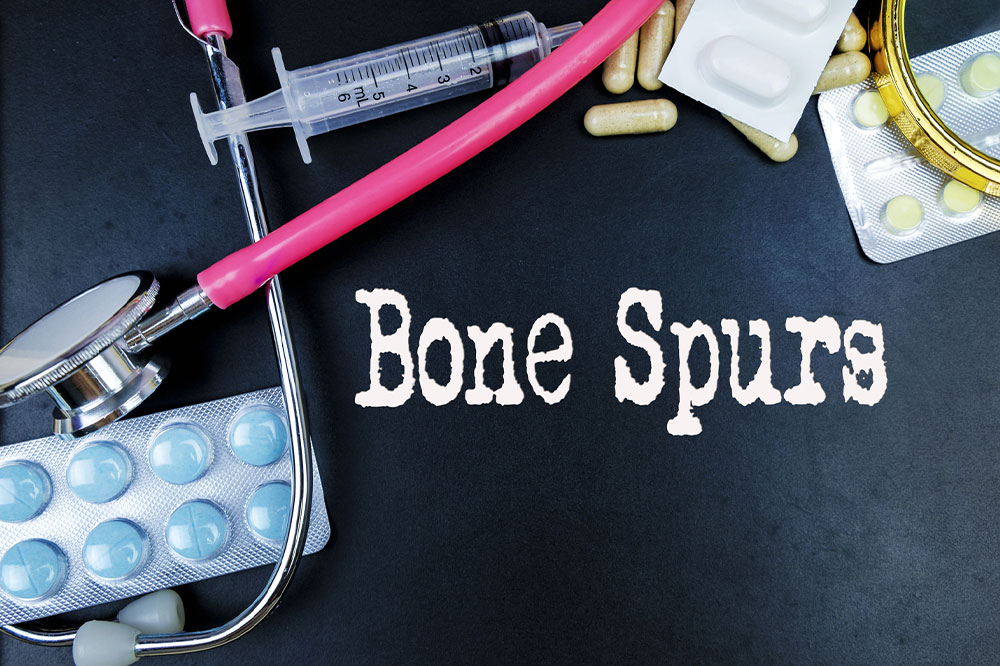Bone Spurs – Causes, Types, and Management Options
A bone spur is a health disorder where a tiny extra bone forms between joints. The additional bony growth is smooth and rarely exceeds a centimeter in length. Bone spurs can develop in any joint in the body, such as the hips, shoulders, knees, and spine. However, most people get them in the front of the heel or the center above the foot. It takes years to form and can be treated with surgery.
Causes
The condition can develop due to several factors, such as old age, wearing shoes that do not give adequate support, and regularly engaging in physical activity that puts a lot of strain on the feet.

Types
There are two kinds of bone spurs, as discussed below:
Osteophytes
They are often seen along synovial joints or joints that help with movement. Osteophytes are believed to occur due to friction and pressure on the bone and are frequently connected with osteoarthritis.
Enthesophytes
They are bone spurs that form at an enthesis. It is the point where a ligament or tendon attaches to a bone. Enthesophytes can form due to tight ligaments and tendons rubbing against the bone, a soft tissue injury, or an inflammatory condition.
Bone spurs may also be classified depending on where they develop in the body, such as bone spurs in the heel or spine.
Bone spurs in the heel
A heel spur is a pointed bony protrusion around the heel bone. It is usually caused by the accumulation of calcium deposits beneath the bone. But it can also be due to other disorders that affect the heel, such as plantar fasciitis. Plantar fasciitis causes heel spurs under the sole or the plantar region. It is caused by inflammation of the plantar fascia ligament at the bottom of the foot.
Tendinitis or Achilles tendon inflammation is a disorder that causes heel spurs at the back of the heel, leading to soreness and heel pain that is exacerbated when pushing off the ball of the foot.
The symptoms of bone spurs in the heel include:
Sharp pain in the heel when standing up in the morning
Dull aching in the heel for the remainder of the day
Soreness and inflammation at the front of the heel
A feeling of heat being emitted from the affected area
A noticeable bone-like protrusion beneath the heel
Softness at the bottom of the heel that makes barefoot walking difficult
Bone spurs on the spine
Some people suffer from bone spurs on the spine. It usually occurs when the body attempts to recover from another condition, like a degenerative bone disease. Although not all bone spurs on the spine produce discomfort, the pain can be excruciating for some. The spur can develop anywhere along the spine, but it is most frequent in the neck and lower back.
Bone spur treatments and relief tips
There are several bone spur treatments, and doctors recommend options depending on the severity of the condition:
Surgery
Surgery is generally reserved for those who have not responded to alternative bone spur treatments. But in some cases, the only option to eliminate spurs is to remove the growths surgically. Most individuals who have undergone bone spur surgery have positive outcomes. Besides this procedure, doctors may recommend other alternatives to lessen heel discomfort and inflammation.
Cold therapy
It involves applying ice packs or rolling the affected foot over a bottle of cold water for around 20 minutes to numb the area and reduce swelling. This therapy should be done three to four times a day.
Exercises and stretches
Doctors may suggest a few stretching exercises to help relax the muscles in the feet and calves. If unsuccessful, they might refer the patient to a physiotherapist, who could create a specific workout plan for heel pain relief.
Comfortable shoes
Cushioned shoes, silicone heel pads, or custom-made orthotics may help people suffering from heel pain. One can contact a doctor to recommend a shoe solution as per their condition.
Oral treatments
Several oral treatment options help reduce pain and swelling. However, they may only work as a temporary fix and not be appropriate for the long term. Moreover, oral treatments can have side effects and may not be suitable for everyone. So, it is advisable to consult a doctor before using them.
Preventive measures
The following are a few steps one can take to lower the risk of bone spurs:
Follow a healthy and balanced nutrition plan
Add more vitamin D and calcium-rich foods to the meals
Exercise regularly
Avoid exerting pressure on the bone
Wear supportive shoes
If a person experiences the symptoms of a bone spur, they should consult an expert immediately. The doctors run several tests and scans to diagnose the condition and then recommend a suitable bone spur treatment.

